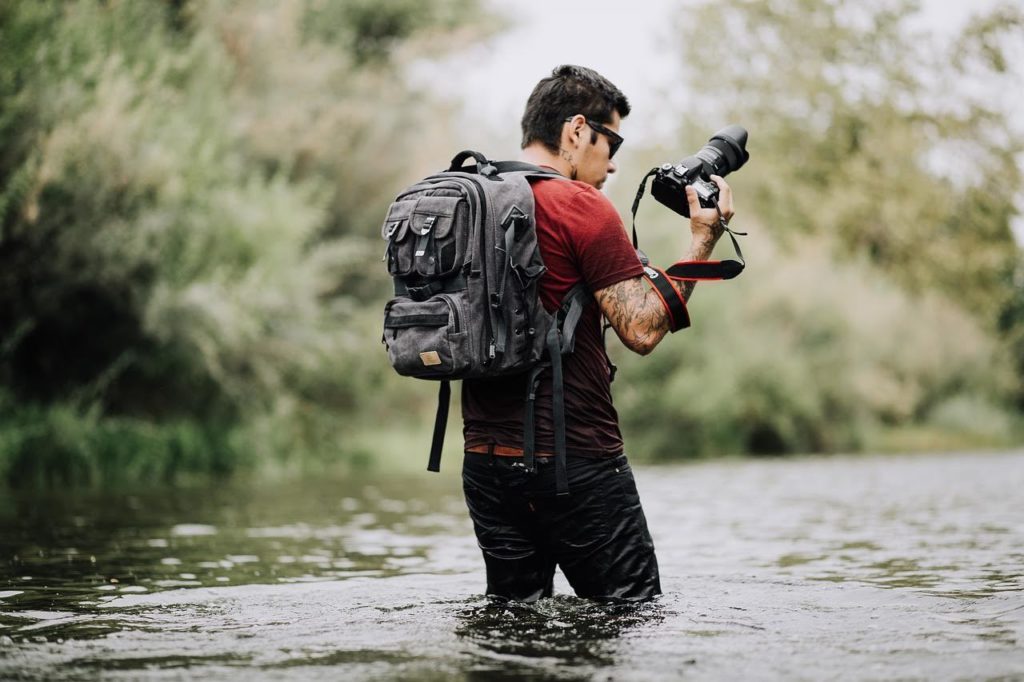
Traveling is truly a fun thing to do. When you travel, you are able to meet new people, explore great places and essentially try new stuff. And of course, the most enjoyable thing about traveling is the memories you make. Who wouldn’t want to capture those moments, those beautiful sceneries you were exposed to? And so, here are some of the best travel cameras you can buy to help you capture great moments on your adventures, to help you make the memories last.
What to Look for
When choosing a camera for your travels, their things which you must consider in order to make the most out of it. It’ll be easier to choose if you can determine what your needs are in the first place. Like, do you need portability? Are you after professional image quality? Are you going somewhere that would require your camera to be weatherproof? Or are you fine with a well-rounded, multipurpose model? Answering those questions would help make choosing a camera easier. Aside from your specific needs, here is some general stuff to consider when getting a camera:
- Portability – when you travel, you walk a lot as you go from place to place enjoying the sights and seeking stuff to try out. Also, if your target destinations are somewhat far apart, you will surely need to board public transportation like buses, taxis and such. This means that with all that going to and fro involved in travel, a heavy, bulky camera would be difficult to carry and use. This is why you should consider models that are portable, those you can carry easily and use at any given moment.
- Manual Settings – the ability to manually control all camera settings enables one to dial in the perfect shot in different situations. Also, a camera with manual control will help improve your photography skills
- Megapixels – that assumption that more megapixels is better? Not always true, especially if the pixels themselves are small. Although, more megapixels on a large sensor will give you higher detail, thus allowing you to crop your image without reducing its quality.
- Aperture – measured in f/numbers (f/1.4, f/2.8, f/4, etc.), this tells how better the lens will perform in low-light conditions. The lower the number, the better (and more expensive).
- Zoom Range – a zoom lens would enable you to take closer shots of your subjects, like people or animals for instance. However, bigger zoom means a bulkier camera. The zoom range is a personal preference, though it would be more convenient, especially for travel, to have the option of zooming in without changing lenses.
- HD/4K Video – most cameras worth their buck can shoot video in HD 1080p. There are also those that have 4K capabilities (this is only needed when you’re doing professional work though). And of course, these 4k cameras cost higher.
- Wi-Fi/Bluetooth – getting a camera with Wi-Fi or Bluetooth capabilities will allow you to upload your photos instantly or transfer them to your computer or smartphone. And if you don’t have access to a computer, like when in travel, you can still share your photos in social media.
- Interchangeable Lenses – getting a camera with interchangeable lenses allows you to pick the perfect lens for various situations. DSLR and some mirrorless cameras have this feature.
- Weatherproofing – there are some cameras which are better protected from moisture and dust than others. It would be better to get a camera that can hold up against the elements, especially if you plan on shooting in very dusty or wet environments.
- RAW – in the RAW format, the image is saved without any internal modifications unlike in the JPG format. This is why advanced users prefer the RAW format, as it gives them more leeway when editing their images with software later. Not all cameras can save in this format though.
- Stabilization – there are cameras/lenses which offer Optical Image Stabilization (OIS), a feature that deals with the “handshake” on slower shutter speeds, to help keep images sharp in low-light situations. There are also models that have internal sensor stabilization that helps offer good results in photography.
Read more: Best Entry-level Cameras 2020
The Cameras
Here are some models for your consideration (in no particular order):
Panasonic TZ200

Specs:
- Sensor size: one-inch
- Lens: 24-360mm, f/3.3-6.4
- Monitor: 3.0-inch, 1, 240k dots
- Resolution: 20.1MP
- Viewfinder: EVF
- Video: 4K
Pros:
- One-inch sensor
- 15x optical zoom
Cons:
- Small EVF
- Fixed screen
Sony RX100 VII

Specs:
- Sensor size: one-inch
- Lens: 20-200mm, f/2.8-4.5
- Monitor: tilting, 921k-dot 3.0-inch LCD
- Resolution: 20.1MP
- Viewfinder: 2.35-million dot retractable finder
- Video: 4K
Pros:
- Ultra-high-speed shooting
- Fast, high-tech AF (autofocus)
- Versatile zoom range
Cons:
- Fiddly EVF
- Slippery finish
- Small controls
Fujifilm X-T30
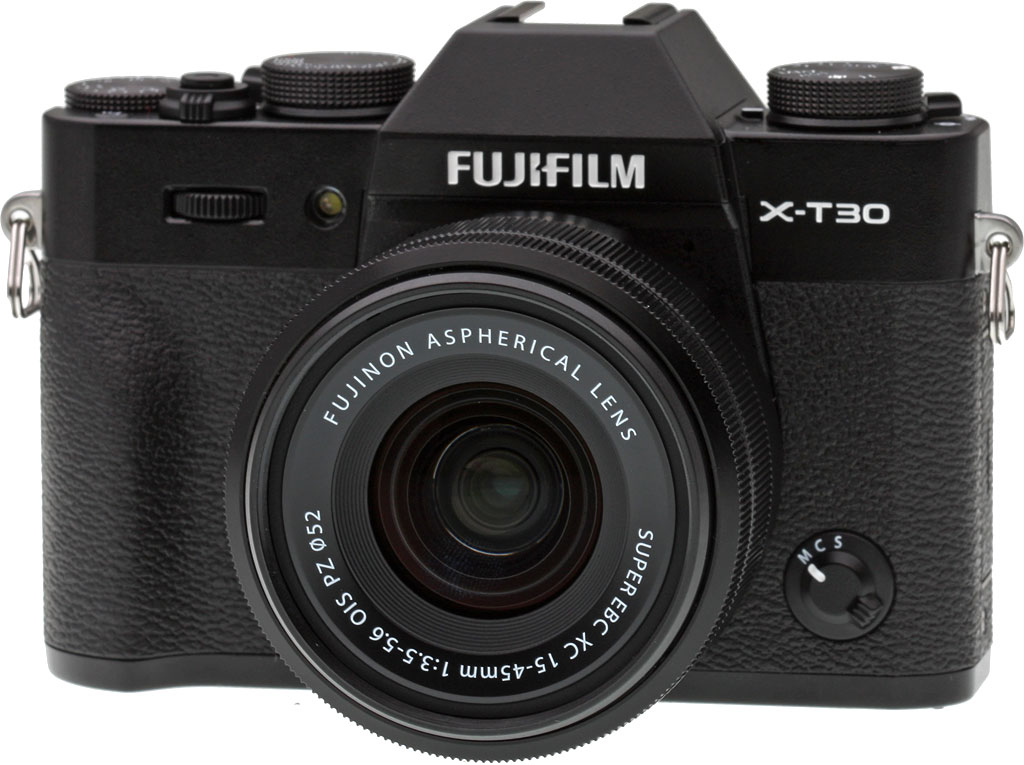
Specs:
- Sensor: ASP-C back-illuminated X-trans CMOS 4
- Lens: N/A
- Monitor: 3.0-inch vari-angle touchscreen, 1,037,000 dots
- Resolution: 26.1MP
- Viewfinder: 2.36 million dot EVF
- Video: 4K
Pros:
- Great build quality
- Great value for money
- Good default JPEG output
- Quick AF
Cons:
- No in-body stabilization
Canon G5X Mark II
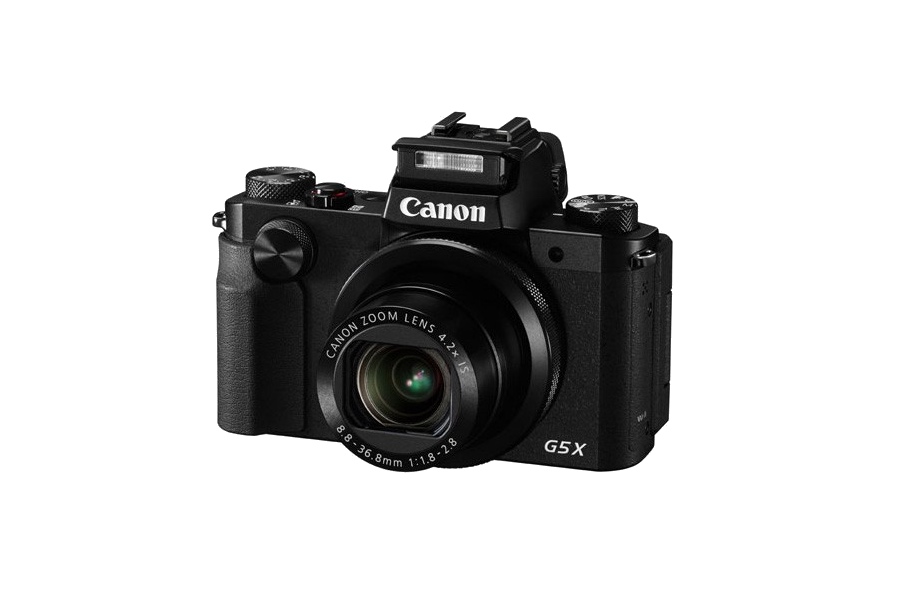
Specs:
- Sensor size: one-inch
- Lens: 5x zoom (24-120mm equivalent)
- Monitor: tilting, 1040k-dot 3.0-inch TFT LCD
- Resolution: 20.1MP
- Viewfinder: pop-up, 2360k-dot OLED electronic viewfinder
- Video: 4K
Pros:
- Great size and handling
- Pop-up viewfinder
- Good zoom range
Cons:
- Expensive
Nikon Z6
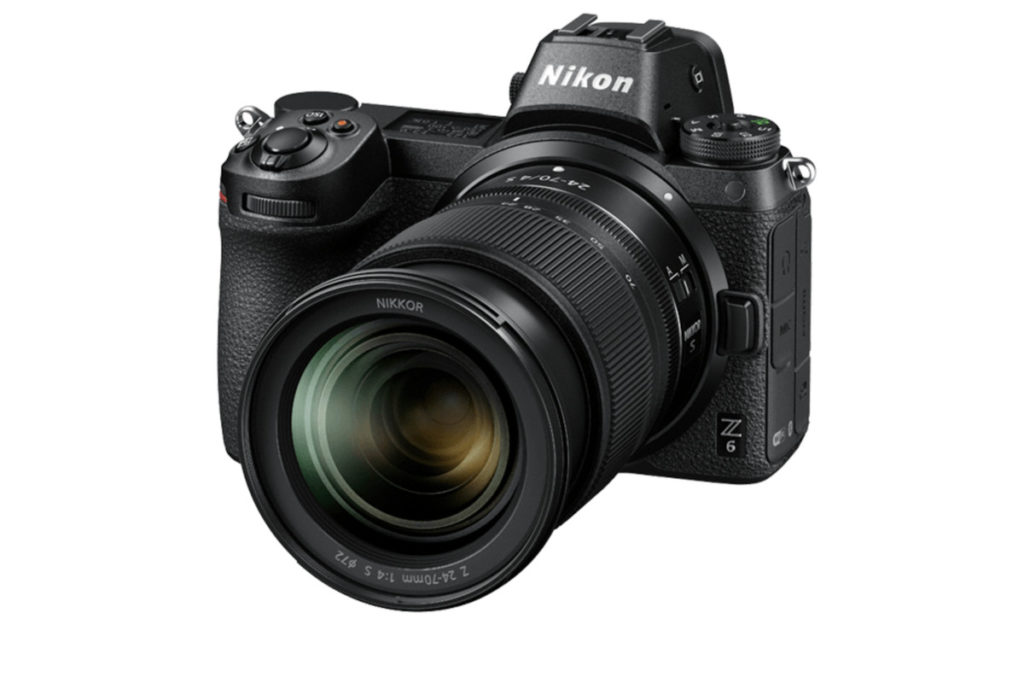
Specs:
- Sensor size: full-frame
- Lens: N/A (Z Mount)
- Monitor: 3.2-inch tilting 2100k-dot touch-sensitive TFT LCD
- Resolution: 24.5MP
- Viewfinder: 0.5-inch, 3690k-dot OLED
- Video: 4K
Pros:
- Great handling
- Small size (among full-frames)
- Tilting screen
- Full-frame sensor
Cons:
- Overall bulky system
- Limited lens availability
Nikon Z50
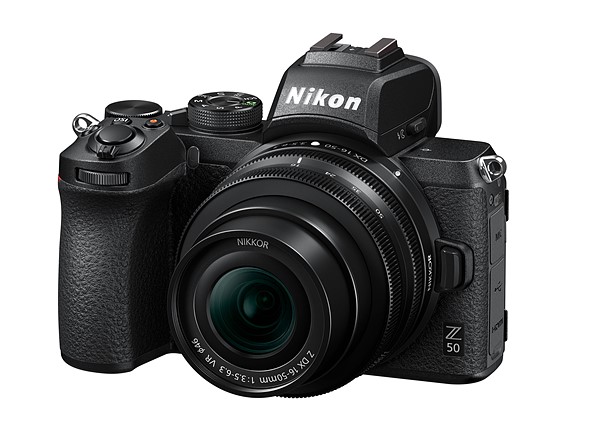
Specs:
- Sensor size: APS-C
- Lens Mount: Z
- Monitor: 3.2-inch 1040k-dot tilting touchscreen
- Resolution: 20.9MP
- Viewfinder: 0.39-inch, 2360k-dot OLED electronic viewfinder
- Video: 4K
Pros:
- Great handling
- Small size
- Good value
Cons:
- Limited native lens range
Panasonic G90
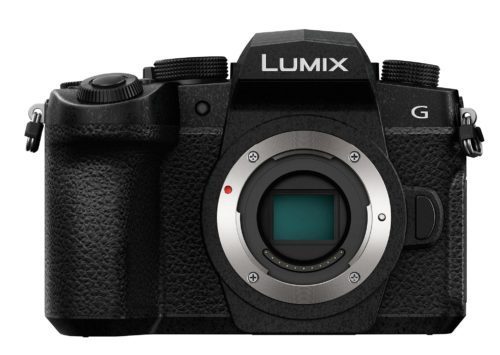
Specs:
- Sensor size: four thirds
- Lens Mount: micro four thirds
- Monitor: 1040k-dot 3.2-inch fully-articulating touchscreen
- Resolution: 20.3MP
- Viewfinder: 2,360k-dot OLED EVF
- Video: 4K
Pros:
- Great handling
- Great video features
- Good native lens range
Cons:
- Small sensor
Canon EOS M6 Mark II
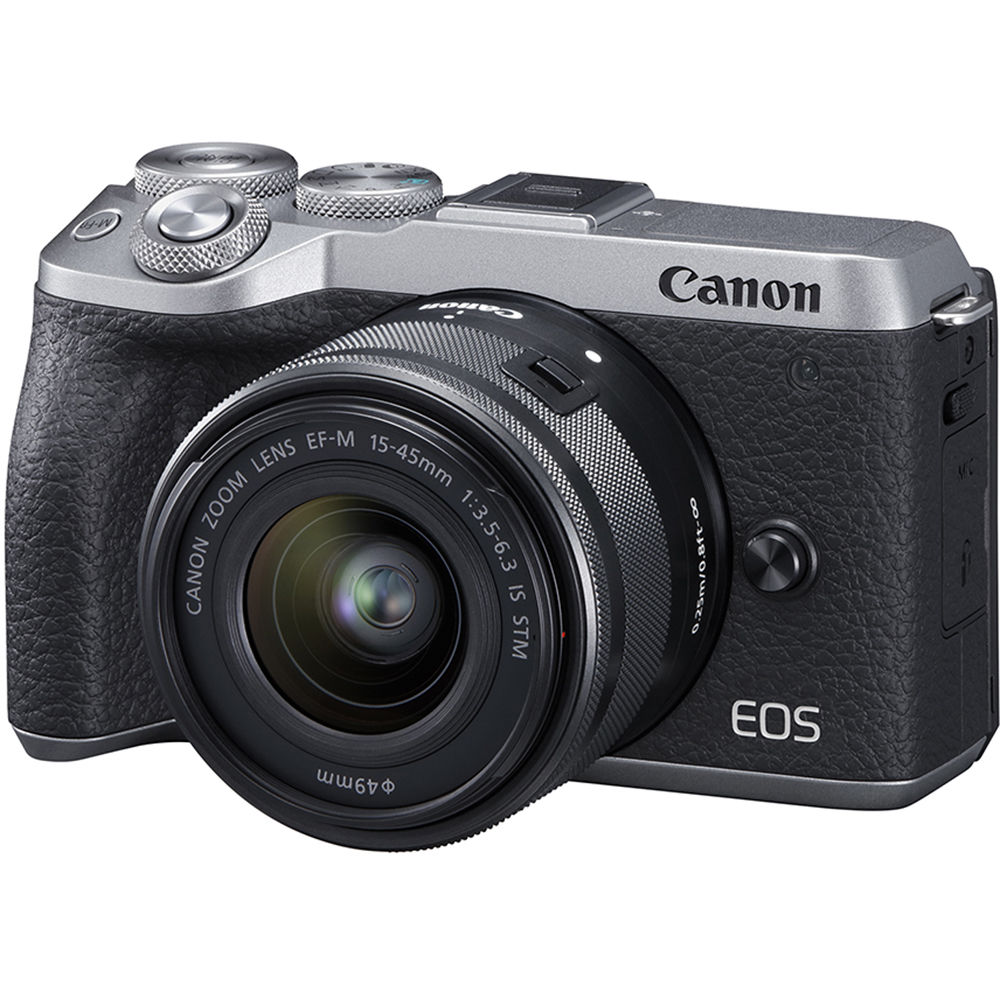
Specs:
- Sensor size: APS-C
- Lens Mount: EF-M
- Monitor: 3.0-inch tilting 1.04m-dot touchscreen
- Resolution: 32.5MP
- Viewfinder: N/A
- Video: 4K
Pros:
- Small size
- Uncropped 4k video
- High resolution sensor
Cons:
- No inbuilt viewfinder
Panasonic Lumix LX100 Mark II
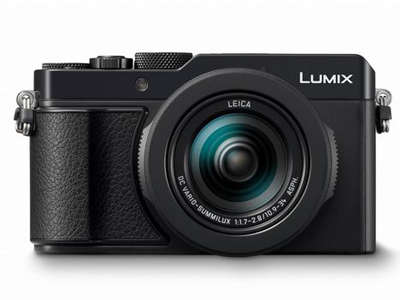
Specs:
- Sensor size: four thirds
- Lens: 24-75mm (equivalent) f/1.7-2.8
- Monitor: 3.0-inch, 1240k-dot, touch-sensitive TFT LCD
- Resolution: 17MP
- Viewfinder: 0.38-inch, 2760k-dot Live Viewfinder
- Video: 4K
Pros:
- Large sensor
- Small body
- Touch-sensitive screen
Cons:
- Screen doesn’t tilt
- Just a few upgrades from its predecessor
Canon G1X Mark III
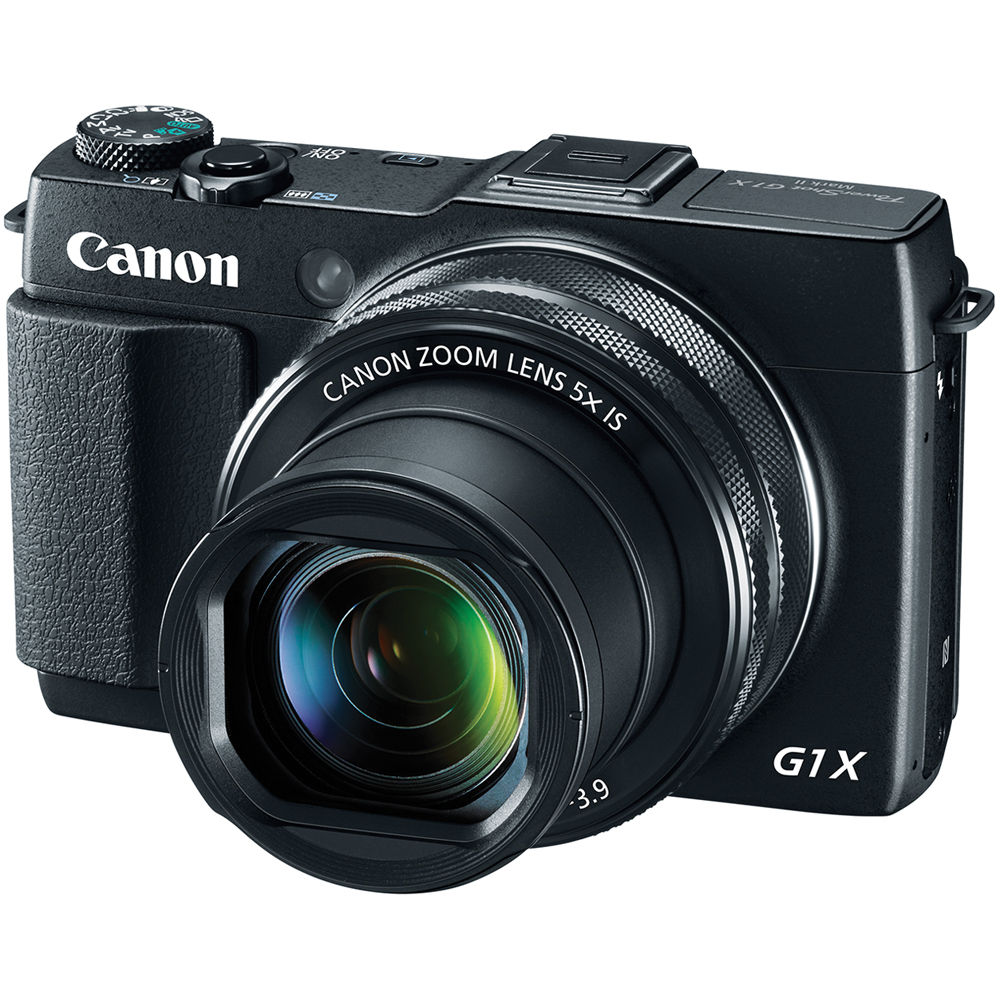
Specs:
- Sensor size: APS-C
- Lens: 24-72mm equivalent f/2.8-5.6 zoom lens
- Monitor: 3-inch 1.04M-dot fully articulating
- Resolution: 24MP
- Viewfinder: 2.36M-dot electronic viewfinder
- Video: 1080/60p
Pros:
- DSLR-sized sensor
- Vari-angle screen
- Small body
Cons:
- Limited zoom
- Short battery life
Sony RX10 IV
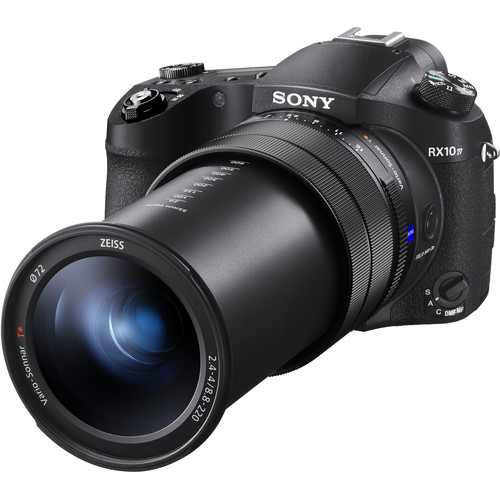
Specs:
- Sensor size: one-inch
- Lens: 25x optical zoom, 24-600mm f/2.4-4
- Monitor: 3-inch, tilting, 1,440,000-dot
- Resolution: 20.1MP
- Viewfinder: 0.39-inch electronic viewfinder, 2,359,296-dots
- Video: 4K
Pros:
- Long lens
- One-inch sensor
Cons:
- Expensive
- Bulky
Nikon P950
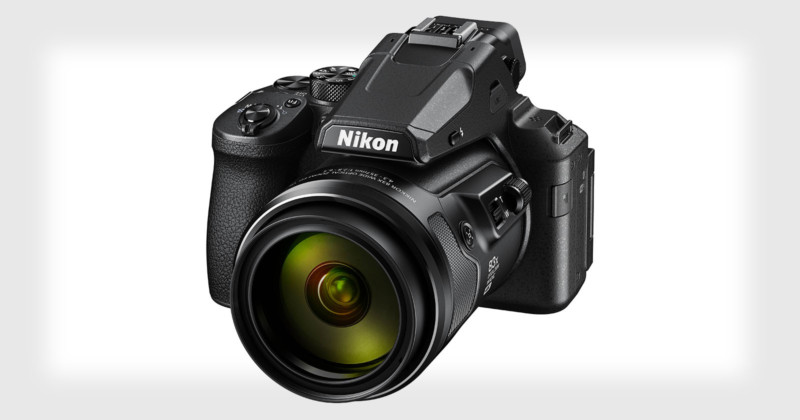
Specs:
- Sensor size: 1/2.3-inch
- Lens: 24-200mm (83x)
- Monitor: 3.2-inch 921k-dot LCD
- Resolution: 16MP
- Viewfinder: 0.39-inch, 2359k-dot OLED
- Video: 4K
Pros:
- Huge zoom range
- RAW format
- Full manual control
- High resolution viewfinder
Cons:
- Small sensor
- Screen not touch-sensitive
- Not good for action
Fujifilm X100F
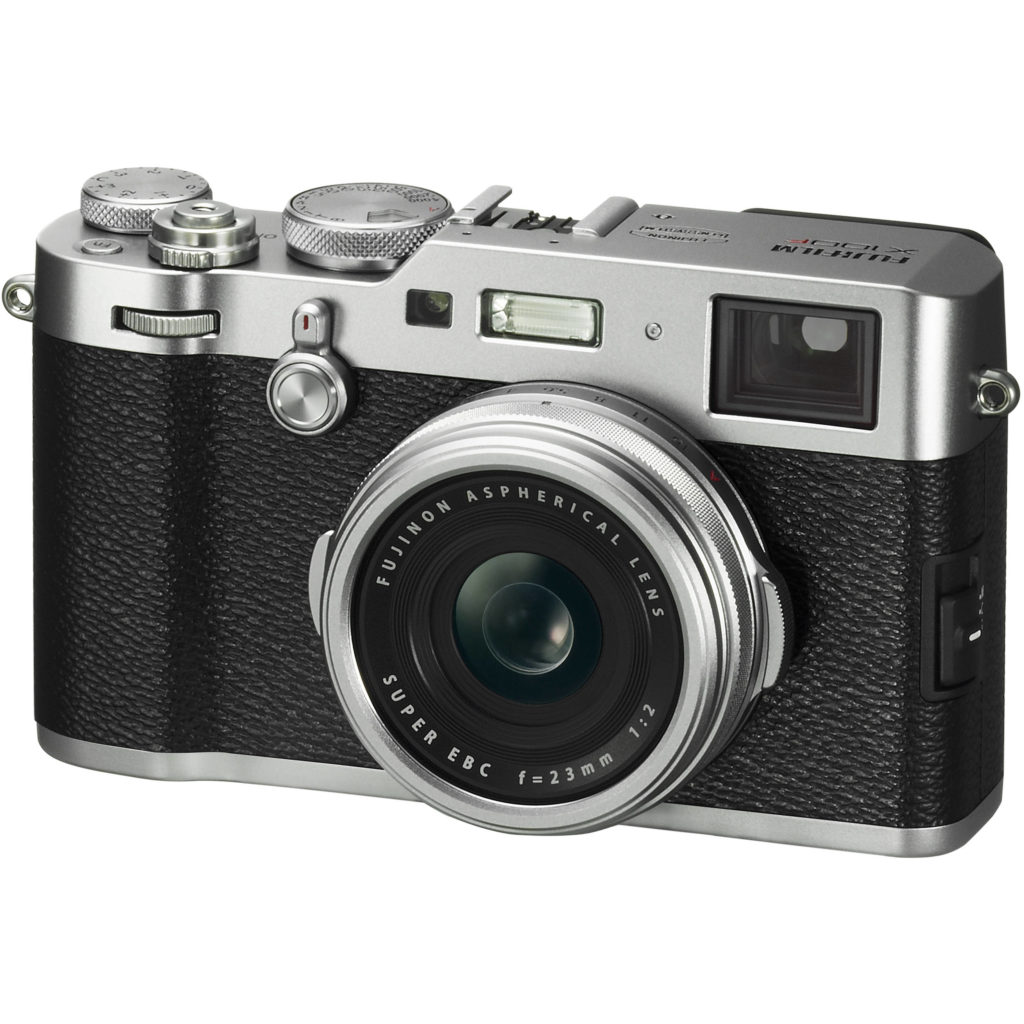
Specs:
- Sensor size: APS-C
- Lens: 23mm (equivalent to 35mm) f/2.0 fixed lens
- Monitor: 3-inch, 1040k-dot fixed screen
- Resolution: 24.3MP
- Viewfinder: hybrid optical and electronic viewfinder
- Video: Full HD
Pros:
- APS-C sensor
- Aesthetics
Cons:
- Expensive
- Fixed length lens
GoPro Hero 8
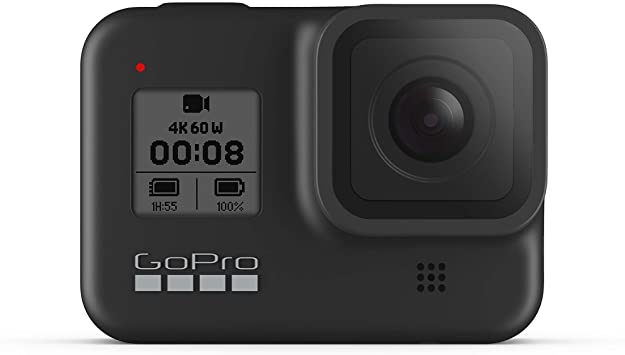
Specs:
- Sensor size: small
- Lens: 6mm fixed lens
- Monitor: 2-inch touchscreen
- Resolution: 12MP
- Viewfinder: N/A
- Video: 4k60
Pros:
- Small and lightweight
- Great video stabilization
- Built-in mount
Cons:
- Limited use for stills
Canon SX740 HS
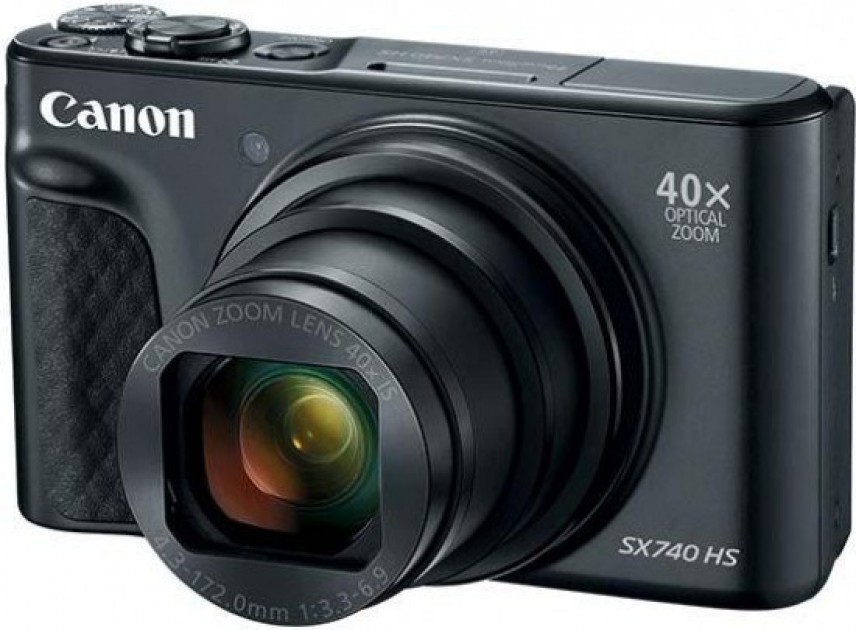
Specs:
- Sensor size: 1/2.3-inch
- Lens: 24-960mm (equivalent) f/3.3-6.9
- Monitor: 3.0-inch, 922k-dot, tilting TFT LCD
- Resolution: 20.3MP
- Viewfinder: N/A
- Video: 4K
Pros:
- Huge zoom range
- 4K video
- Simple to use
Cons:
- Doesn’t shoot in RAW format
- Not good for low-light conditions
- Screen not touch-sensitive
Nikon D500
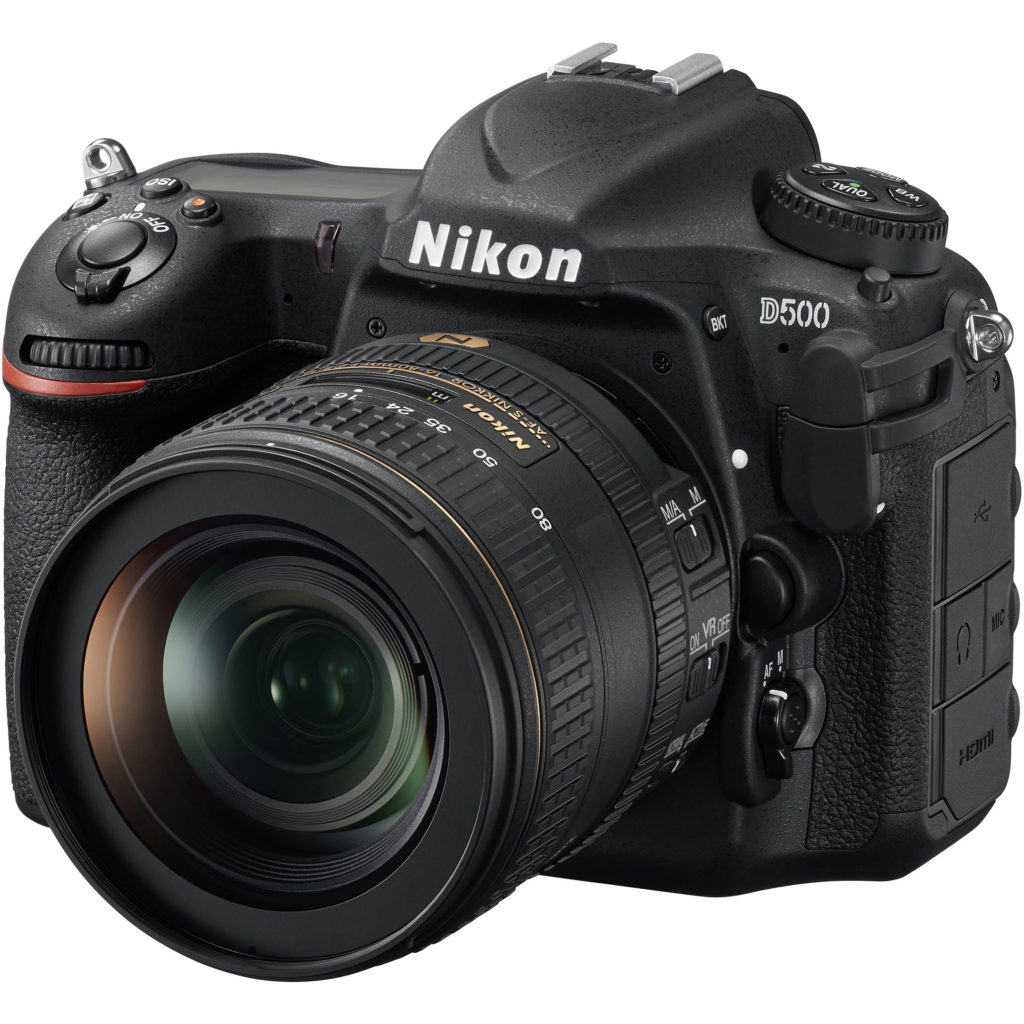
Specs:
- Sensor size: APS-C
- Lens: N/A
- Monitor: 3.2-inch, 2359k-dot touch-sensitive, tilting screen
- Resolution: 20.9MP
- Viewfinder: 100% optical viewfinder
- Video: 4K
Pros:
- Great all rounder
- APS-C sensor
Cons:
- Heavy and bulky
- Screen not fully articulating
Panasonic G9
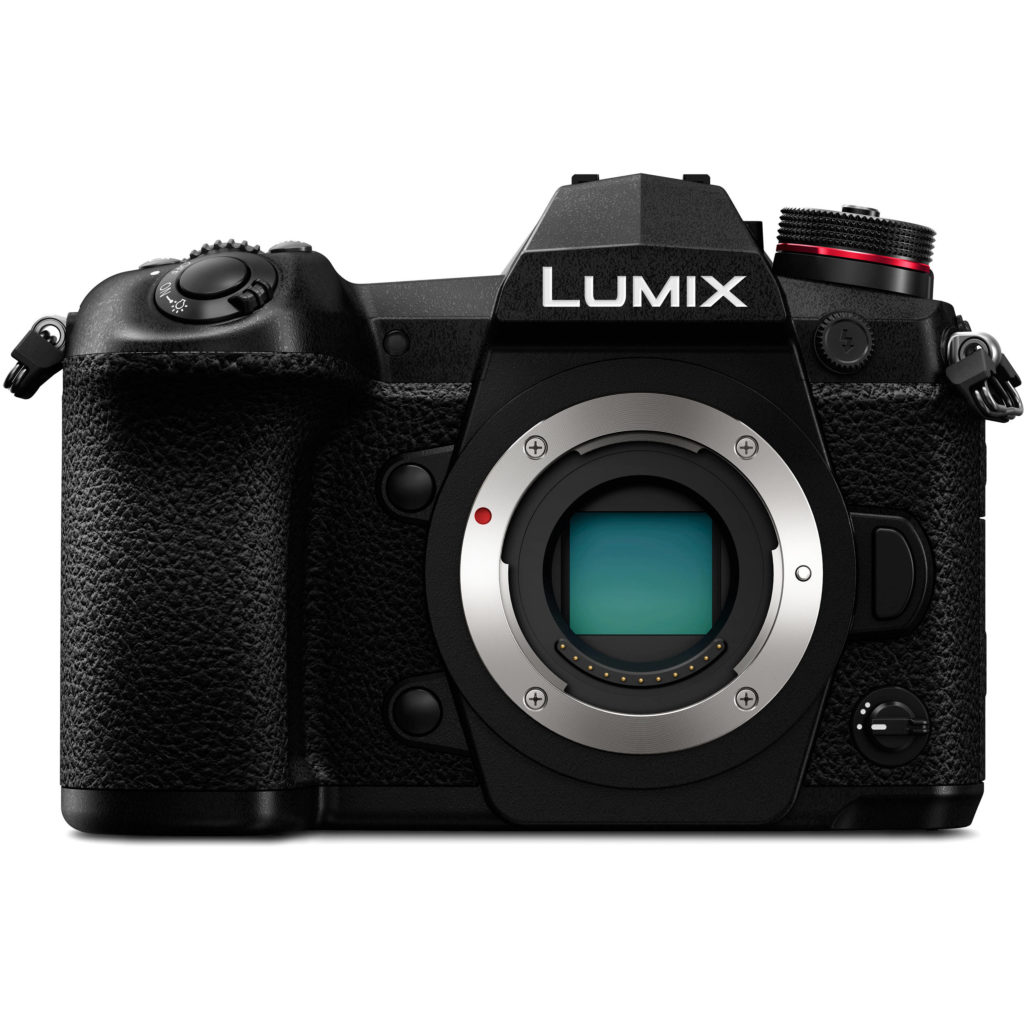
Specs:
- Sensor size: four thirds
- Lens: N/A
- Monitor: 3-inch, articulating, touch-sensitive TFT LCD, 1040k-dots
- Resolution: 20MP
- Viewfinder: OLED electronic viewfinder, 3,680k-dots
- Video: 4K
Pros:
- Small overall system
- Excellent viewfinder
Cons:
- Sensor smaller than DSLR
- Large body for a CSC
Panasonic TZ100
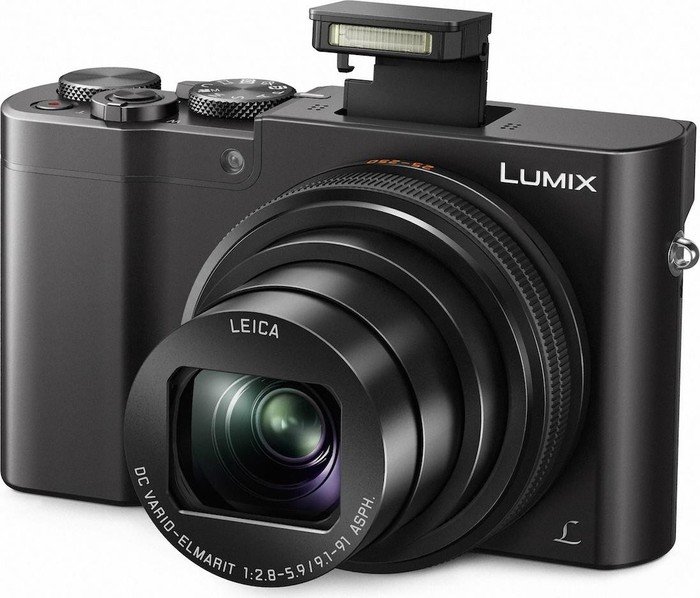
Specs:
- Sensor size: one-inch
- Lens: 10x optical 25-250mm (equivalent) f/2.8-5.9
- Monitor: 3-inch 1040k-dot touch-sensitive screen
- Resolution: 20.1MP
- Viewfinder: 0.2-inch 1160k-dot electronic viewfinder
- Video: 4K
Pros:
- One-inch sensor
- 10x optical zoom
Cons:
- Small viewfinder
- Less capable in lowlight
GoPro Session
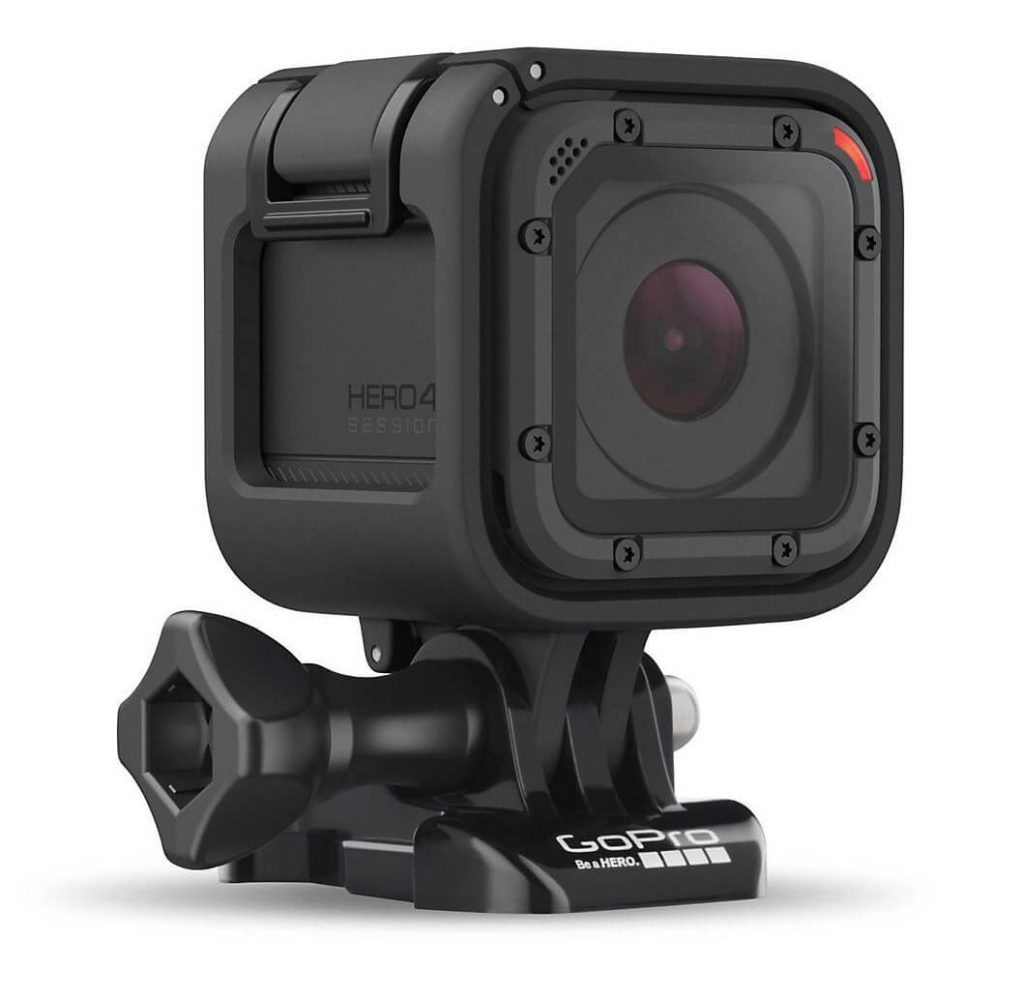
Specs:
- Sensor size: 1/3.2 inch (4.54 x 3.42mm)
- Resolution: 10MP
- Zoom: 15-30mm
Pros:
- Small
- Affordable
- Waterproof
Cons:
- Small sensor
- Limited zoom
- No screen
YI 4K+
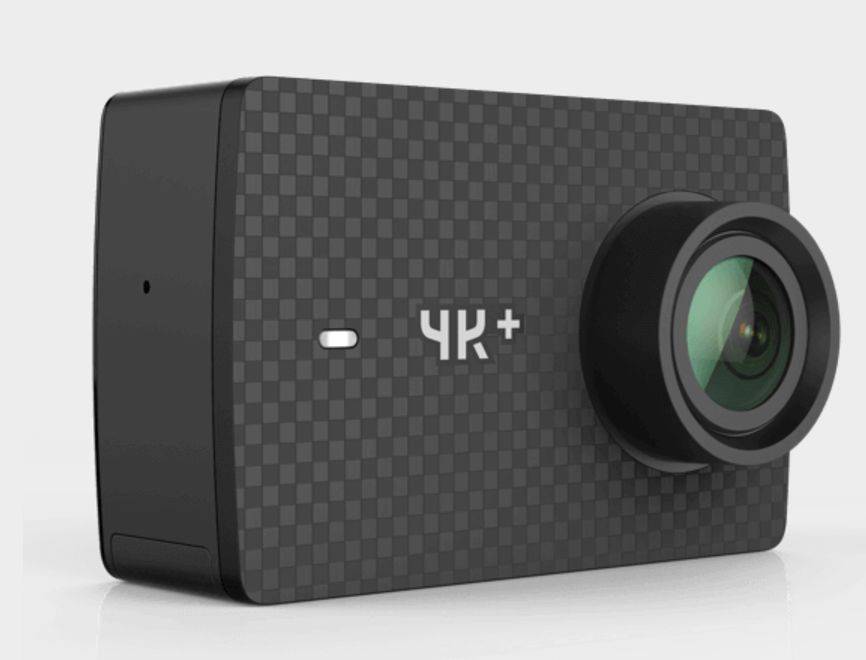
Specs:
- Sensor size: 1/2.3 inch (6.17 x 4.63 mm)
- Resolution: 12MP
- Zoom: 15-30mm
Pros:
- Affordable
- Similar quality to GoPro
Cons:
- Basic recording experience
- Unreliable tech support
And those are some of the cameras you might want to take a look at. Traveling is fun, and for sure, there will be moments and scenes that you want to capture. In such cases, a camera would be a truly indispensable tool, yes?
Comments
0 comments

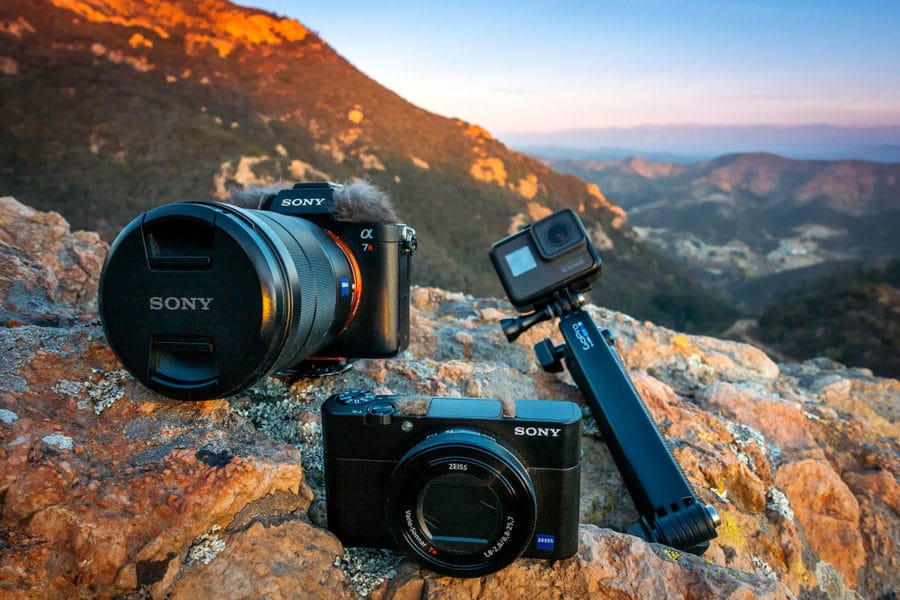
Let’s talk.
I can suggest to come on a site on which there are many articles on this question.
The question is interesting, I too will take part in discussion. Together we can come to a right answer. I am assured.
What necessary words… super, magnificent idea
At me a similar situation. It is possible to discuss.
https://amic.co.in/catalog/font/
The point of view of your article has taught me a lot, and I already know how to improve the paper on gate.oi, thank you. https://www.gate.io/de/signup/XwNAU
You really make it appear so easy together with your presentation but I
in finding this topic to be really one thing that I believe I’d
by no means understand. It sort of feels too complicated and very large for
me. I’m taking a look ahead for your subsequent post, I
will attempt to get the cling of it! Escape room lista
I like this blog very much, Its a rattling nice billet to read and get information..
Официальный сайт казино Joycasino
Joycasino – популярное среди игроков из стран СНГ казино. Казино Джойказино официально был открыт в 2012 году, сейчас входит в ТОП лучших площадок для азартных игр. Доступны обычные автоматы, спортивные росписи, лайвы. Реализуется щедрая бонусная политика, которая делает игру максимально выгодной и приятной. Перечень слотов постоянно расширяется, в каталоге размещаются слоты проверенных разработчиков.
Официальный сайт 1Вин
1Win – популярное среди игроков из стран СНГ казино. Казино 1Win официально был открыт в 2012 году, сейчас входит в ТОП лучших площадок для азартных игр. Доступны обычные автоматы, спортивные росписи, лайвы. Реализуется щедрая бонусная политика, которая делает игру максимально выгодной и приятной. Перечень слотов постоянно расширяется, в каталоге размещаются слоты проверенных разработчиков.
Официальный сайт 1Вин
1Win – популярное среди игроков из стран СНГ казино. 1Win официально был открыт в 2012 году, сейчас входит в ТОП лучших площадок для азартных игр. Доступны обычные автоматы, спортивные росписи, лайвы. Реализуется щедрая бонусная политика, которая делает игру максимально выгодной и приятной. Перечень слотов постоянно расширяется, в каталоге размещаются слоты проверенных разработчиков.
Официальный сайт 1Вин
1Win – популярное среди игроков из стран СНГ казино. 1Win официально был открыт в 2012 году, сейчас входит в ТОП лучших площадок для азартных игр. Доступны обычные автоматы, спортивные росписи, лайвы. Реализуется щедрая бонусная политика, которая делает игру максимально выгодной и приятной. Перечень слотов постоянно расширяется, в каталоге размещаются слоты проверенных разработчиков.
Официальный сайт 1Вин
1Win – популярное среди игроков из стран СНГ казино. 1Win официально был открыт в 2012 году, сейчас входит в ТОП лучших площадок для азартных игр. Доступны обычные автоматы, спортивные росписи, лайвы. Реализуется щедрая бонусная политика, которая делает игру максимально выгодной и приятной. Перечень слотов постоянно расширяется, в каталоге размещаются слоты проверенных разработчиков.
Официальный сайт 1Вин
1Win – популярное среди игроков из стран СНГ казино. 1Win официально был открыт в 2012 году, сейчас входит в ТОП лучших площадок для азартных игр. Доступны обычные автоматы, спортивные росписи, лайвы. Реализуется щедрая бонусная политика, которая делает игру максимально выгодной и приятной. Перечень слотов постоянно расширяется, в каталоге размещаются слоты проверенных разработчиков.
Официальный сайт 1Вин
1Win – популярное среди игроков из стран СНГ казино. 1Win официально был открыт в 2012 году, сейчас входит в ТОП лучших площадок для азартных игр. Доступны обычные автоматы, спортивные росписи, лайвы. Реализуется щедрая бонусная политика, которая делает игру максимально выгодной и приятной. Перечень слотов постоянно расширяется, в каталоге размещаются слоты проверенных разработчиков.
You made some decent points there. I checked on the internet for more information about the issue and found most people will go along with your views on this site.
There’s definately a lot to know about this issue. I really like all of the points you made.
This is a topic which is near to my heart… Cheers! Where can I find the contact details for questions?
Great web site you have got here.. It’s hard to find high-quality writing like yours nowadays. I seriously appreciate individuals like you! Take care!!
Howdy! This article couldn’t be written much better! Reading through this article reminds me of my previous roommate! He always kept talking about this. I will forward this information to him. Pretty sure he’s going to have a good read. Many thanks for sharing!
An outstanding share! I’ve just forwarded this onto a colleague who has been conducting a little homework on this. And he in fact bought me lunch simply because I stumbled upon it for him… lol. So let me reword this…. Thank YOU for the meal!! But yeah, thanx for spending time to discuss this matter here on your site.
An interesting discussion is definitely worth comment. I believe that you need to publish more about this subject, it might not be a taboo matter but typically people don’t talk about these topics. To the next! Many thanks!
You’re so awesome! I do not think I’ve truly read through anything like this before. So nice to discover another person with a few unique thoughts on this issue. Seriously.. thank you for starting this up. This site is something that’s needed on the web, someone with a little originality.
Hello there! I simply wish to give you a huge thumbs up for the excellent info you have right here on this post. I’ll be returning to your website for more soon.
I could not refrain from commenting. Very well written!
After looking into a number of the blog posts on your web page, I truly appreciate your technique of blogging. I book-marked it to my bookmark webpage list and will be checking back soon. Please check out my web site as well and let me know your opinion.
Howdy! I could have sworn I’ve visited your blog before but after looking at some of the articles I realized it’s new to me. Nonetheless, I’m certainly happy I came across it and I’ll be book-marking it and checking back often.
Aw, this was a very nice post. Spending some time and actual effort to create a great article… but what can I say… I hesitate a whole lot and never seem to get nearly anything done.
The very next time I read a blog, I hope that it does not fail me as much as this one. I mean, Yes, it was my choice to read through, but I really believed you would probably have something helpful to talk about. All I hear is a bunch of moaning about something you could fix if you were not too busy looking for attention.
I was able to find good advice from your blog posts.